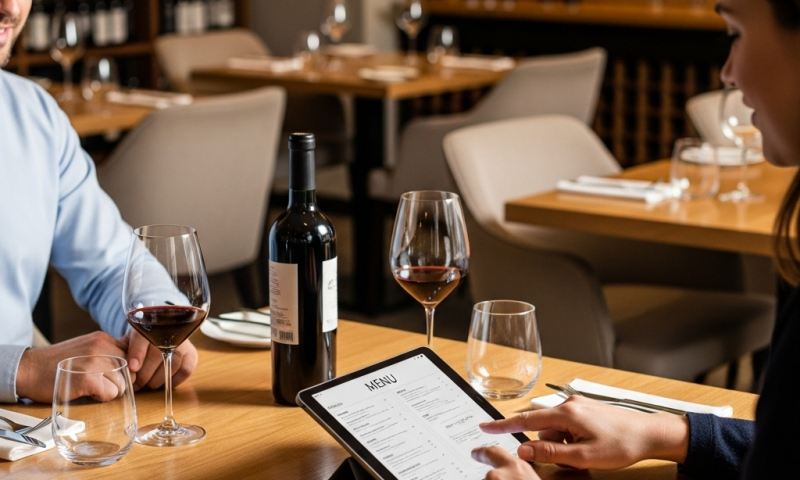
Do you want to create a free online restaurant menu quickly and effectively, without sacrificing customer experience or the image of your establishment? You’re in the right place. This pragmatic guide shows you how to publish a menu online for free, which solutions to use, how to integrate a QR code on your tables, and when to switch to a specialized tool if you need more. For wine bars, restaurants, and hotels, we also discuss the digital wine list and the virtual sommelier with Winevizer, for a truly modern experience.
When aiming for “free,” three things are sought: speed, cost limitation, and control over content. The good news: publishing an online menu without paying is possible. The caution: avoid “hidden” traps (advertising, slowness, large files, lack of statistics) that degrade the experience and harm sales. This guide helps you make the right trade-off between simplicity, image, and operational efficiency.
The simplest solution: create your menu in PDF format (via Word, Google Docs, Canva…) and then host it on a free service. Just share the link on your website, social media, Google Business Profile, or via a QR code on the table.
If you already have a site (WordPress, Wix, etc.), create a “Menu” page optimized for mobile. Otherwise, you can use a free page offered by some builders or a simple publishing tool. It’s more flexible than a PDF and updated with one click.
Publish your menu (PDF or image) in a public folder and share the link. Convenient for quick online publishing, provided you enable “public” sharing.
Generate a free QR code pointing to your PDF or page. Print it on your easels, placemats, posters, menu holders, or hotel rooms.
Start with a clear hierarchy: starters, main courses, desserts, set menus, children’s menu, drinks, wines. For a wine bar or a hotel with room service, clearly separate the sections (bar, snacking, breakfast, wines by the glass, bottles, soft drinks).
Short, precise texts focused on benefits. Highlight the origin, cooking method, texture, and a touch of history if relevant. For wines, mention grape variety, style, a few key aromas (fruits, flowers, spices), and serving (temperature, decanting if needed).
A well-compressed photo (lightweight, web format) makes all the difference. Prefer natural light and a simple background. Compress images before uploading to maintain loading speed.
Put your PDF or page online and retrieve the public URL. Check the display on iOS and Android, on 4G and Wi-Fi.
Paste the URL into a free QR code generator, download it in high definition, place it on your materials, and add a short call to action: “Scan to discover the menu.” Consider the print size for easy scanning.
Ask 2-3 people to test: loading time, readability, ease of finding a dish, a wine, or a set menu. Adjust accordingly.
A dedicated digital menu offers navigation designed for dining: filters, quick search, clear sections, highlighting suggestions, and real-time updates without reprinting QR codes. For a wine list, this avoids displayed shortages, enhances your selection work, and reassures customers.
Winevizer (www.winevizer.com) is a digital wine list with a virtual sommelier. Specifically, you create and publish your wine list online, accessible via QR code or tablet, and your customers are guided in their choices thanks to the virtual sommelier. It’s a simple way to offer a modern experience, consistent with your identity, and to support your sales without technical complexity.
You can start for free with the methods seen above (PDF or page), then switch to a dedicated solution like Winevizer when you want to go further in presentation, ease of updates, accessibility from QR code and tablet, and customer decision support.
Use this template for your free online menu:
The quickest way is to prepare a polished PDF (or a simple web page), host it for free (site, dedicated page, or public drive), and share the URL via a QR code at the table. Optimize the file size, ensure mobile readability, and test before deploying.
Use a free QR code generator, paste the URL of your menu, download the visual in high definition, and print it. Prefer a contrasting QR code, with a sufficient size and a short call to action (“Scan the menu”).
For a quick start, the PDF is suitable. If you anticipate frequent updates and want a better mobile and SEO experience, a web page is preferable. In any case, keep a stable URL to avoid reprinting QR codes.
Clear titles, prices, short descriptions, availability of allergen information, hours if necessary (room service), and highlighting suggestions. For the wine list: distinguish between wines by the glass and bottles, indicate style and a few tasting notes.
Separate sections (glass/bottle), use simple descriptions and taste markers. If you want to go further in customer support, a digital wine list with a virtual sommelier like Winevizer can guide choices and streamline service via QR code or tablet.
You can publish a menu for free today and improve your in-room service. And when you want a smoother experience, especially for your wine list, explore Winevizer: a digital wine list accessible via QR code or tablet, with a virtual sommelier to guide your customers. Discover how to simplify your updates and enhance your selection at winevizer.com.
Try it now: create your free online menu with the steps above, then compare it with a digital wine list designed for dining. Your customers — and your team — will feel the difference.
Pendant 1 mois sans engagement